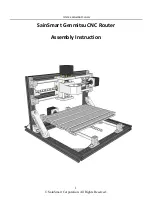
Chapter 16 IPSec VPN
124
16.3.4 Negotiation Mode
The phase 1
Negotiation Mode
you select determines how the Security Association (SA) will be
established for each connection through IKE negotiations.
•
Main Mode
ensures the highest level of security when the communicating parties are negotiating
authentication (phase 1). It uses 6 messages in three round trips: SA negotiation, Diffie-Hellman
exchange and an exchange of nonces (a nonce is a random number). This mode features identity
protection (your identity is not revealed in the negotiation).
•
Aggressive Mode
is quicker than
Main Mode
because it eliminates several steps when the
communicating parties are negotiating authentication (phase 1). However the trade-off is that
faster speed limits its negotiating power and it also does not provide identity protection. It is
useful in remote access situations where the address of the initiator is not know by the
responder and both parties want to use pre-shared key authentication.
16.3.5 IPSec and NAT
Read this section if you are running IPSec on a host computer behind the Router.
NAT is incompatible with the
AH
protocol in both
Transport
and
Tunnel
mode. An IPSec VPN using
the
AH
protocol digitally signs the outbound packet, both data payload and headers, with a hash
value appended to the packet. When using
AH
protocol, packet contents (the data payload) are not
encrypted.
A NAT device in between the IPSec endpoints will rewrite either the source or destination address
with one of its own choosing. The VPN device at the receiving end will verify the integrity of the
incoming packet by computing its own hash value, and complain that the hash value appended to
the received packet doesn't match. The VPN device at the receiving end doesn't know about the NAT
in the middle, so it assumes that the data has been maliciously altered.
IPSec using
ESP
in
Tunnel
mode encapsulates the entire original packet (including headers) in a new
IP packet. The new IP packet's source address is the outbound address of the sending VPN gateway,
and its destination address is the inbound address of the VPN device at the receiving end. When
using
ESP
protocol with authentication, the packet contents (in this case, the entire original packet)
are encrypted. The encrypted contents, but not the new headers, are signed with a hash value
appended to the packet.
Tunnel
mode
ESP
with authentication is compatible with NAT because integrity checks are
performed over the combination of the "original header plus original payload," which is unchanged
by a NAT device.
Summary of Contents for Movistar GPT-2541GNAC
Page 47: ...Chapter 4 LAN 47 Figure 25 LAN Setup...
Page 99: ...Chapter 11 DNS 99 Figure 62 DNS Server...
Page 144: ...Chapter 20 Wireless 144 Figure 92 Wireless Security...
Page 166: ...Chapter 21 Voice 166...
Page 196: ...Chapter 21 Voice 196...
















































